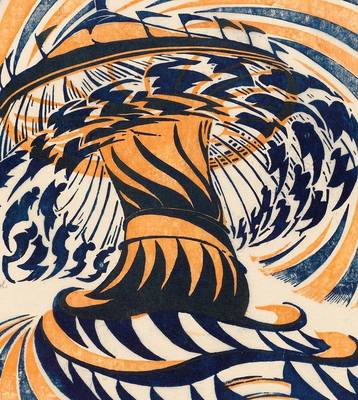
Je cadeautjes zeker op tijd in huis hebben voor de feestdagen? Kom langs in onze winkels en vind het perfecte geschenk!
- Afhalen na 1 uur in een winkel met voorraad
- Gratis thuislevering in België vanaf € 30
- Ruim aanbod met 7 miljoen producten
Je cadeautjes zeker op tijd in huis hebben voor de feestdagen? Kom langs in onze winkels en vind het perfecte geschenk!
- Afhalen na 1 uur in een winkel met voorraad
- Gratis thuislevering in België vanaf € 30
- Ruim aanbod met 7 miljoen producten
Zoeken
€ 78,95
+ 157 punten
Omschrijving
It is little known that interbellum Britain hosted a generation of Modernist artists who absorbed the wealth of Continental avant-garde idioms and adapted them to their own unique ends. Some of this work was done under the rubric of Vorticism, the Neofuturist movement spearheaded by Wyndham Lewis, while other artists were closely associated with London's Grosvenor School of Art (and so came to be known collectively as the Grosvenor School), breaking new ground in the practice of linocut. Rhythms of Modern Life examines the impact of Cubism and Futurism on British printmaking in the years between the First and Second World Wars, focusing in particular on the dynamic imagery of 13 artists, including C.R.W. Nevinson, Paul Nash, Edward Wadsworth and David Bomberg, all early followers of Italian Futurism and British Vorticism, and on the works of Grosvenor School artists Claude Flight, Sybil Andrews, Cyril Power and Lill Tschudi. All of these artists coined styles that addressed the velocity of modern life, espousing industry, speed and an optimism for the century ahead. This book, the first survey of its kind, features more than 100 lithographs, etchings, woodcuts and linocuts, ranging from geometric abstractions to forceful impressions of the first fully mechanized war, Jazz Age images of sporting events, speed trials and other contemporary diversions. Clifford S. Ackley's introduction takes stock of the art historical moment and is followed by discussions of the prints, an overview of the history and technique of the modern linocut and short biographies of the artists.
Specificaties
Betrokkenen
- Auteur(s):
- Uitgeverij:
Inhoud
- Aantal bladzijden:
- 224
- Taal:
- Engels
Eigenschappen
- Productcode (EAN):
- 9780878467242
- Verschijningsdatum:
- 10/01/2008
- Uitvoering:
- Hardcover
- Formaat:
- Genaaid
- Afmetingen:
- 226 mm x 250 mm
- Gewicht:
- 1084 g

Alleen bij Standaard Boekhandel
+ 157 punten op je klantenkaart van Standaard Boekhandel
Beoordelingen
We publiceren alleen reviews die voldoen aan de voorwaarden voor reviews. Bekijk onze voorwaarden voor reviews.









